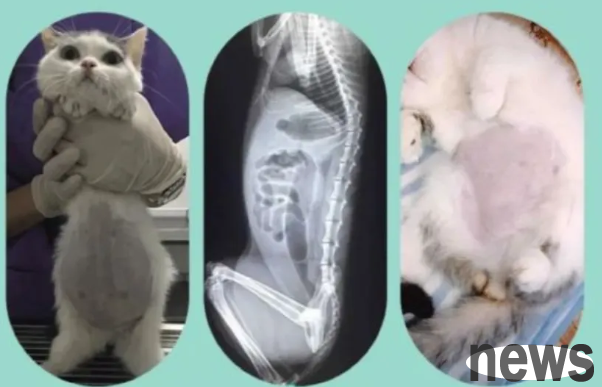Pet cats are indispensable members of the family and society, and their health and happiness are one of the things their owners care about the most. Therefore, owners also need to have a certain understanding and understanding of cats in order to discover and deal with them in advance. Let’s learn about some common diseases and responses that cats may face!
01
Female infectious peritonitis
Female infectious peritonitis is a chronic progressive infectious disease in felines caused by feline infectious peritonitis virus. It is characterized in clinically by peritonitis, accumulation of large amounts of ascites and high mortality.

Symptoms
The initial symptoms of this disease are not obvious or have no characteristic symptoms. Often accompanied by sick cats, weight loss, appetite loss or intermittent anorexia. The temperature rises to 39.7℃-41℃, and mild respiratory symptoms can be seen. After 7-40 days, there will be obvious enlargement of the abdominal circumference, a large amount of ascites accumulate in the abdominal cavity, and there will generally be no obvious pain during palpation of the abdominal wall. As the abdominal circumference gradually increases, sick cats may show symptoms such as dyspnea, anemia, and weight loss. After several weeks of the disease, the cat fails and dies.

The pathogen
Its pathogen is coronavirus, which has poor resistance to the external environment. Generally, disinfectants can kill the virus. Cats aged 1 to 2 and elderly cats often suffer from this disease, while purebred cats often suffer from domestic cats.
The virus has a certain affinity for the eyes, central nerve, kidney and liver, and the above organs show almost no symptoms of ascites. When the eyes are damaged, symptoms of keratitis and conjunctivitis can be seen; when the central nervous system is damaged, hindrical movement disorder, movement disorder, and spasm can be shown; when the liver is damaged, jaundice and indigestion can be seen; when the kidney is damaged, kidney enlargement, anemia, proteinuria can be seen, and sick cats may experience symptoms such as renal failure.
Female Leukemia Virus Infection There are two types of leukemia in cats, one is lymphoma, erythroblastic or myeloblastic leukemia, and the other is mainly immunodeficiency virus. This type of disease is contrary to the abnormal enhancement of the previous type of cell, mainly due to cell damage and cell development disorders, manifested as anemia caused by thymus atrophy, lymphopenia, neutropenia, and bone marrow erythrocyte line development disorders.
Pathogen
Cat leukemia virus is mainly transmitted horizontally in the cat population. It can be transmitted through the respiratory and digestive tracts, or vertically. Pregnant female cats can infect the fetus through the uterus.
cats' leukemia mainly causes cat infection, and there is no gender-based breed difference. Kittens are more susceptible to adult cats in age. The virus does not spread to humans and will not pose a threat to human health.
Symptoms
The incubation period of this disease is generally long and has various symptoms. It can generally be divided into two categories: tumor diseases and immunosuppressive diseases:
Tumorous diseases
a. Gastrointestinal lymphoma: It is mainly characterized by B-cell lymphoma in the gastrointestinal lymphoid tissue. Sometimes it can affect the spleen, liver and kidneys. Clinically, it is manifested as loss of appetite, weight loss, mucosal paleness, anemia, vomiting, diarrhea and other symptoms. This type accounts for about 30% of all cases.
b. Multiple lymphoma: It is mainly manifested in swollen lymph nodes throughout the body, and the superficial lymph nodes of the body are often touched by hands. Clinically, the symptoms include weight loss and depression. This type accounts for about 20% of the cases.
Immunosuppressive Diseases
Immunosuppressive Diseases The main causes of death in cats with immunosuppressive diseases are anemia and decreased leukocytes. The encapsular protein antigen of leukemia virus has an immunosuppressive effect and has a strong pathogenic effect on T cells, especially immature thymic lymphocytes, thereby reducing the number of T cells and decreasing the function. This causes the body to lose its defense function and the decline of white blood cells, making the body unable to protect against the invasion of foreign pathogens, and eventually die of systemic infection.

Female Rabies
Female Rabies is the same as the rabies virus in dogs, also known as hydrophobia. It is characterized by manic and restlessness, disordered consciousness, excessive response to environmental stimuli, attacking other animals, and finally paralyzing and dying.
The cat rabies virus is not heat-resistant and is inactivated for 2 minutes at 100℃ and 1 hour at 50℃. It is sensitive to acid, alkali, formalin and other disinfectants. 70% alcohol, 0.01% iodine solution and 1%-2% soapy water can also inactivate its virus.
Symptoms
The length of the incubation period of this disease varies depending on the wound site and the content of the virus, and the course of the disease varies from 2 to 4 days. In the early stage, the sick cat hides in the dark, sings, resists excessively, and reacts hyperactively to sound and light. Then it becomes manic, restless, aggressive, fierce and straight, does not obey the owner's orders, gradually becomes depressed, unsteady in walking, and falls to the ground with paralysis of the hind limbs, and dies due to general failure.
Transmission characteristics
Sick and virulent animals are the main sources of infection. The virus mainly exists in the saliva of the sick animals. It is toxic 15 days before the onset of clinical symptoms and 10 days after the disappearance of symptoms. Healthy cats are mainly infected by wounds (skin scratches, bites, mucosa breakage, etc.) and can infect people.
Do not bandage the wound after a cat bites a person. You should squeeze out the blood in multiple times and rinse it with soapy water in time.
To sum up, cat health issues require our owners to be vigilant and pay attention to them at all times. Through timely prevention, observation and treatment, we can help cats overcome the difficulties of diseases and let them stay with us healthily and happily for a longer period of time. Living with cats is to pay attention to their health and happiness, so that they can enjoy the wonderful time of every day carefree!
